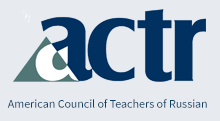Russian Language Journal
Keywords
language communities, Russian language, Russian linguistic worldview
Abstract
In 2005 a collection of articles appeared under the title Ключевые идеи русской языковой картины мира (‘Key Ideas of the Russian Linguistic Worldview’), authored by Anna A. Zalizniak, Irina B. Levontina and Aleksei D. Shmelev and published by the Языки славянской культуры (‘Languages of Slavic Culture’) publishing house in Moscow. The studies in Key Ideas of the Russian Linguistic Worldview were inspired by the work of Anna Wierzbicka, most notably her Understanding Cultures through Their Key Words: English, Russian, Polish, German, Japanese (Oxford University Press, 1997). The idea behind the volume is that language communities operate with a ‘linguistic picture of the world’, i.e., a linguistic worldview, which consists of a network of important concepts that can be specific to a culture in their particular configurations, and which, last but not least, are expressed by corresponding ‘key words’. The chapters of Key Ideas of the Russian Linguistic Worldview discuss numerous such key words of the Russian language. The first section of the book is titled ‘In place of an Introduction’, which is followed by five sections:—‘Space and Time’, ‘People: Soul and Body’, ‘Feelings and Attitudes’, ‘Intentions and Dealings’, and ‘Ethical Concepts’. The book then concludes with ‘In Place of a Conclusion’ and an appendix that contains a revised Russian version of Wierzbicka (2002) accompanied by a commentary from Shmelev. Sections two through six are the core of the book; each section contains between three and eight chapters on various words expressing the key concepts of the Russian linguistic worldview. These chapters present a wealth of information, ranging from the differences between Russian and western terms for periods of the day, to the precise nature of быт ‘daily life’ and пошлость ‘crassness,’ to the area of sensitivity (e.g., обидно ‘annoying/frustrating’ and совестно ‘ashamed’), to name a few. The authors note repeatedly that the words they discuss resist translation into other languages (indeed, the translations given for the words above can only be taken as rough/contextual equivalents). The volume is well worth reading in its entirety, especially for foreign students/scholars of Russian who do not grow up with an intuitive grasp of these key cultural lexical items of Russian. However, as the volume is written in Russian, the information contained in it is relatively inaccessible to many foreign learners of Russian. And it seems that few outside the Russian linguistics community are aware of this vein of Russian scholarship, which is relevant for Russian cultural studies in general.
Recommended Citation
Shmelev, A. D., Konopelko,, N., & Dickey,, S. M. (2021). Excerpt from Ключевые идеи русской языковой картины мира: The Breadth of the Russian Soul. Russian Language Journal, 71(3). https://doi.org/https://doi.org/10.26067/6K9Q-R553

